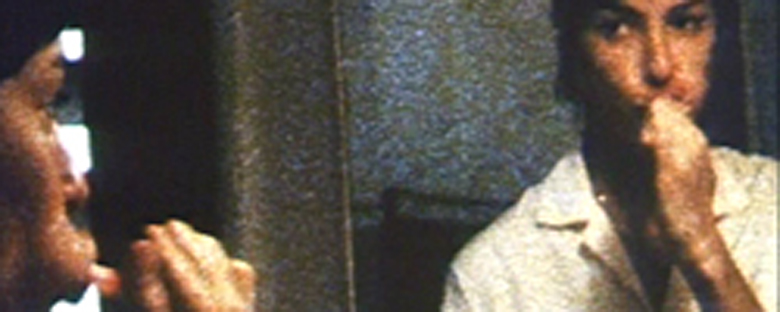Reviews
Ross McElwee
USA, 1994
Credits
Review by Leo Goldsmith
Posted on 02 February 2006
Source First Run Features DVD
Related articles
Early in Sherman’s March, Ross McElwee sees off the actress, Pat, on her way to Hollywood with a simple expression of encouragement: “Do it.” Such a simple, direct, and confident command may seem odd for so relentlessly self-qualifying a filmmaker as McElwee, but perhaps it points up a secret assuredness at the heart of his work. McElwee is often irresolute about what he should film and why he should film it, but his persistence in pursuing this irresolution, to continue filming anything and everything unremittingly, is an indication of a certain kind of purposiveness.
This very tenacity, however, becomes one of the many “indefinites” in McElwee’s second feature. Picking up a short time after the conclusion of Sherman’s March, Time Indefinite finds McElwee so resolutely in love with Marilyn Levine, his filming partner, that he decides to marry her. This comes as a great relief to all around him, notably his father and his friend, Charleen Swansea, who have already been coaxing him to couple since the previous film. (Charleen’s advice for Ross at his wedding: “Do it.”) At the beginning of their relationship, Ross’s love for his fiancée (and then bride) inspires his filmmaking (Marilyn, a fellow filmmaker, is cinematically sympathetic). But McElwee later finds himself uncertain about his project of total self-documentation. With a new wife, and then a new baby on the way, life moves too quickly for his camera to capture, and as he puts it, it “becomes harder and harder to film my own life and live my own life at the same time.”
This lack of time, energy, and even need to film is further compounded by a series of debilitating events: the death of his grandmother, which is then followed by Marilyn’s miscarriage, which is then followed — quite unexpectedly — by the death of McElwee’s father. McElwee is paralyzed by these successive traumas, and each is tellingly narrated through the mediation of found or recovered imagery: respectively, footage from Backyard, a New Year’s television broadcast, and news reports of the worst snowstorm to hit North Carolina in a century.
Once McElwee recovers from his initial shock, however, filmmaking becomes a therapeutic practice, and much of the remainder of the film follows his itinerant search for an understanding of these events and of death, in general. Interviewing family members and friends such as Charleen — who has recently endured a brutal and almost Faulknerian tragedy of her own — McElwee conducts a characteristically peripatetic pursuit of his subject, filming himself trying to figure out what to film until that subject avails itself. And as he notes, the subject of death even insists on following him, in the figures of a captured fish, gasping for air on a pier, and that of a representative the Killo Exterminating Co., visiting the McElwee residence to do away with some infesting bees.
If Sherman’s March is McElwee’s meditation on eros, then Time Indefinite is his thanatopsis. This, perhaps McElwee’s most intimate, most metaphysical work, foregrounds more than any other the melancholy at the heart of his oeuvre, the desire to hold the present firm and resurrect the past. But true to McElwee’s self-qualifying nature, Time Indefinite is also the film in which this project is most rigorously interrogated: Why persist in a futile attempt to reclaim what is past? Why the need to obsessively self-document, and why the need to persistently compile and edit this material, like so much revisiting of old home movies?
In this way, Time Indefinite is emphatically less coherent than his earlier work. Indeed, if Sherman’s March was notably digressive in its structure, it nonetheless retained a more conventional sense of documentary contrivance (he was, after all, trying to make a historical film). But here, the style is more fluid — and even more digressive — in a manner that will mark all of his subsequent films. Resolutely lacking resolution, his film represents a tacit affirmation that life goes on — no matter how minutely it is documented and spliced together — without punctuation.
We don’t do comments anymore, but you may contact us here or find us on Twitter or Facebook.



